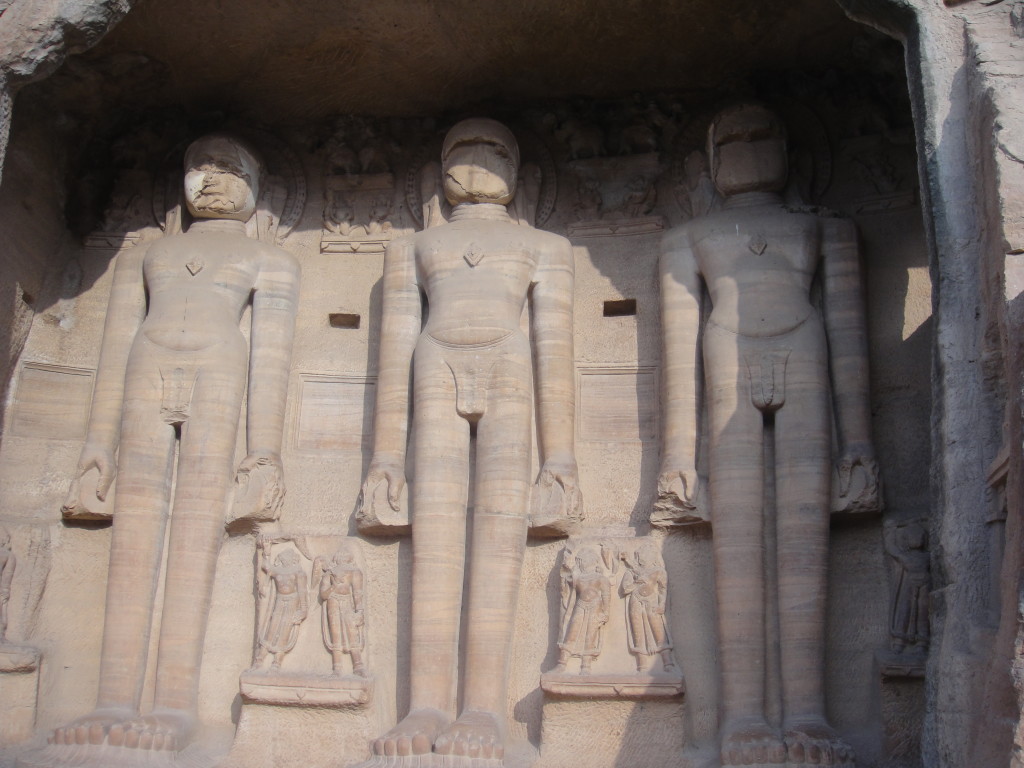Gwalior Fort is the crown jewel in this city which is named after sage Gwali-pa who cured Maharaja Surya Sen of leprosy. While walking on the path leading to the Urwahi gate of the Gwalior fort, one comes across massive statutes of Jain Tirthankaras radiating peace and lending solemnity to the atmosphere. The statutes were carved on the escarpment which forms the base of the fort, the effect was of an open air organic shrine. The statutes of Jain Thirthankaras date from 7th to 15th century AD. Unfortunately, a number of these statues were destroyed by the invading Mughal armies who believed that idolatry was a sin and proceeded to deface the statues by smashing the faces and you know what’s of the idols. This is another sad example of the religious intolerance that has been prevalent in our wonderful world.

On reaching the fort, I decided to follow the directions to the Gurudwara Data Bandi Chod. The Gurudwara is within the fort complex itself and commemorates the release of sixth Sikh Guru, Shri Har Gobind from the dreaded Gwalior jail along with a number of subjugated Kings and princes who came out holding strings of Guru’s chola (cloak). The Gurudwara is a testament to the piety of the Sikh Guru who refused to leave the jail until his fellow inmates were also released.

The fort in itself is very beautiful and well maintained – the tiles add a distinctive color and look to the fort. Blue tiles lends nice colors to the overall grandeur. Best maintenance I have seen for Indian forts. Amazing Architecture, representing the best of Hindu Architecture. Light and sound show at the fort had nice sound effects and was well crafted. It covers history from Ibrahim Lodhi’s conquest to modern India. Devotes ample time to Man Singh Tomar the crown jewel of Gwalior. His love story with Mrignayani the Gujar queen has been beautifully told and made great use of Indian Classical Music. The episode of Sikh guru seems forcibly inserted, it can be omitted or better context provided. Conveniently omits the great Scindia betrayal of the 1857 revolt which would have probably shaped India’s history differently.
Gwalior has extensive linkage with Indian classical music and (Gwalior gharana takes its name from the city. The city’s most famous singer, Tansen, rose to become a jewel in the Mughal court.
Overall a great place, a must see fort with the light and sound show not to be missed. My trip awakened me to the spiritual moorings of this beautiful fortress and city, it has a wonderful juxtapositions of three living religions adding to the cultural mosaic called India.